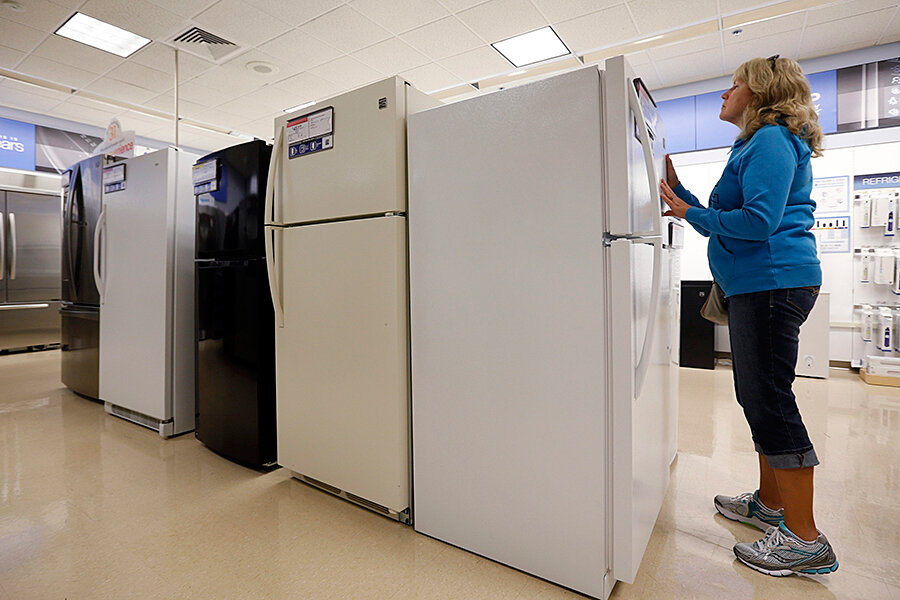Are community refrigerators a practical way to cut down on food waste?
Loading...
A small city in Spain has saved hundreds of pounds of food from going to waste in just two months. Their secret? One refrigerator.
Galdakao's "solidarity fridge," a public refrigerator where community members can drop off and pick up leftovers that would otherwise be thrown out, is the first of its kind in Spain. This exchange site is the latest effort to cut down on food waste in Europe, where more than 90 million metric tons of food are wasted every year, according to the European Environment Agency.
Organizer Álvaro Saiz told The Guardian that he and other members of the city's volunteer association came up with the idea while discussing the amount of food being thrown out by supermarkets in Galdakao, a city just outside of Bilbao with a population of 29,000.
“We started to think that if even just one of their rubbish bins was replaced with a fridge, people could take advantage of these items," Mr. Saiz said. An online search revealing a similar system of shared refrigerators in Berlin confirmed the concept's feasibility. “We realized we could do this – so we did.”
In the seven weeks since the fridge's inception, Saiz estimates the town has saved between 200 and 300 kg (about 450-650 lbs.) of food that otherwise would have been tossed away, and word of its success is already spreading. Last week, the city of Murcia became the second Spanish city to host a solidarity fridge, and Saiz says he has received calls from people as far away as Bolivia interested in setting up similar systems.
While Galdakao's is the first community fridge in Spain, a network of more than 100 similar food sharing sites has existed in Germany for several years. These sites are an offline branch of Foodsharing.de, a website that allows people to connect with other food sharers when they find they have extra food.
The website and sharing network were created by filmmaker Valentin Thurn shortly after the release of his 2010 documentary "Taste the Waste," which highlighted the problem of food waste in Germany. He told The New York Times that the concept of sharing food made sense given the growing popularity of "sharing economy" services like Uber and Airbnb.
His system has a few basic rules: nothing with a "sell by" date, no fresh meat or fish, and nothing that's been left out in the sun all day. There have been no complaints of people getting sick so far, Mr. Thurn says, although there have been some problems with greedy members.
The issue of excessive food waste isn't exclusive to European countries: The average American family of four throws out over 1,160 pounds of food a year, National Geographic reports, roughly equal to 1.2 million calories.
Last fall, after a trip to Germany, Ernst Bertone and two fellow University of California Davis graduate students decided to test out the concept in the US by placing a community refrigerator on their lawn. The experiment ran for a month, during which more than 100 items were exchanged, before being shut down by county health officials listing contamination, food-borne illnesses, and unintentional exposure to food allergies among the potential health risks.
“He’s started a food business. The food’s not from an approved source. He can’t guarantee its safety," April Meneghetti, a Yolo County environmental health specialist, told The Sacramento Bee. "If it's completely unregulated, it's too risky. There's no way to trace back the food if someone got sick."
One neighbor, Robert Weidenfeld, felt that while the students' spirit was "in the right place and the thought of not wasting food is good," "their energies would be best put toward groups that are shown to be effective," such as local food banks and other relief organizations.
But according to UC Davis grad student Ali Hill, shared refrigerators do more than just save food from going to waste. They encourage interactions between neighbors, she says, and create "a great sense of community that's lacking" in many places.








